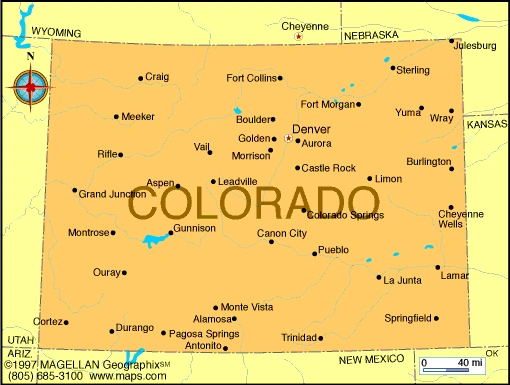Colorado (river, North America) - Geography.
Publié le 03/05/2013

Extrait du document


«
sometime between AD 1300 and 1400, but their descendants, the Hopi and Pueblo people, continue to farm and irrigate using the river's waters.
The first European to visit the river was probably Spanish soldier and explorer Francisco de Ulloa, who explored the mouth of the Colorado in 1539.
In 1540 and 1541another Spaniard, Francisco Vásquez de Coronado, traveled through much of the region around the Colorado River.
An exploring party from the Coronado expedition,led by Garcia López de Cárdenas, was probably the first group of Europeans to view the Grand Canyon. In 1540 the viceroy of Mexico also sent Hernando de Alarcón, a navigator, to supply Coronado by sea.
Alarcón failed to locate Coronado’s party but traversed parts of the Colorado River with his own men, twice making the difficultpassage from the river's mouth to the vicinity of the Gila River, near present-day Yuma, Arizona.
Native people and explorers knew the river by many different names.
Alarcón may have originally called it Rio de Buena Guia (River of Good Guidance), but the nameColorado probably came from early Spanish settlers who had noted its reddish color.
The color was caused by the large amounts of sediment the river carried.
In 1869 American geologist John Wesley Powell made the first detailed exploration of the Colorado River, the Green River, and the surrounding territory.
During thatexpedition, Powell and his party navigated through the Grand Canyon in wooden boats.
In 1871 Powell embarked on another dangerous descent of the Colorado.
Powellwrote a report of his journey for the government in which he suggested that the land could support only a limited amount of irrigated agriculture.
In 1902, however, the U.S.
government began to construct large-scale dams and irrigation systems after the Reclamation Service (now the Bureau of Reclamation) wasestablished.
The water provided by these projects was divided up by the seven states of the Colorado River basin.
In 1922 these states agreed in the Colorado RiverCompact to regulate the use of the river’s water, and Congress approved this agreement in 1929.
The compact assumed that the annual flow of the river was 15 millionacre-feet.
The 15 million acre-feet were split equally between the upper basin states (Colorado, Utah, Wyoming, and New Mexico) and the lower basin states (California,Nevada, and Arizona).
The states in each basin then divided the water among themselves.
However, the compact did not resolve all the disputes surrounding waterallocation, and competition among users continues.
See also Water Policy in the United States
The greatest water quality problem in the Colorado River today is salinity, the amount of solids, primarily salt, in the water.
The river receives dissolved salts from avariety of sources; most of them, such as soils and rocks, are natural. When river water is used for irrigation, some evaporates, and salt becomes concentrated in the remaining water that returns to the river.
The salinity problem is also caused by evaporation from reservoir surfaces and water use by plants along the river.
In thelower river, the concentration of salt in the water is so high that it cannot be used for human consumption without treatment.
A desalination plant near the border withMexico removes salt from the river and enables the United States to provide Mexico with usable water.
Contributed By:William H.
RenwickMicrosoft ® Encarta ® 2009. © 1993-2008 Microsoft Corporation.
All rights reserved..
»
↓↓↓ APERÇU DU DOCUMENT ↓↓↓
Liens utiles
- Colorado (river, North America) - geography.
- North America - Geography.
- Religions of North America - geography.
- Languages of North America - geography.
- North America: Political - geography.





